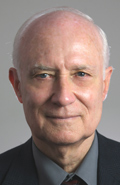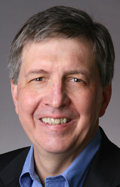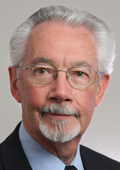Retirement event honors careers of 3 senior architecture professors

John Only Greer

Roger S. Ulrich

David G. Woodcock
Friends, colleagues and former students of three retiring architecture professors, John Only Greer, Roger S. Ulrich and David G. Woodcock, gathered May 10 at the University Club to celebrate the trio’s combined 110 years of teaching, research and service at Texas A&M University.
Greer, holder of the Wallie E. Scott Endowed Professorship of Architectural Practice and Management and a distinguished alumnus of the Texas A&M College of Architecture, has served on the faculty since 1962. Ulrich, who is internationally renowned for research informing modern health facility design, is a professor in the departments of Architecture and Landscape Architecture and Urban Planning and holder of the Julie and Craig Beale Endowed Professorship in Health Facilities Design. He has served on Texas A&M’s faculty since 1988. Woodcock, who joined the Texas A&M faculty in 1962, is the director emeritus of the Center for Heritage Conservation, which he established in 1991 as the Historic Resources Imaging Laboratory.
John Only Greer
Perhaps the most maroon-blooded member of the Department of Architecture faculty, Greer, a Texas A&M former student, earned his Bachelor of Architecture degree in 1957 and his Master of Architecture degree in 1964 and has served at the College of Architecture’s official archivist.
A Fellow in the American Institute of Architects, Greer has also served as chairman of the Texas Board of Architectural Examiners, as a director on the National Board of the American Institute of Architects, as president of the Texas Society of Architects, as president of the Texas Architectural Foundation, for nine years as head of what was then the Department of Environmental Design, and as executive associate dean and interim dean of the College of Architecture.
His many honors include the Tau Sigma Delta Silver Medal, the Texas Society of Architects Award for Lifetime Achievement in honor of Llewelyn W. Pitts, and numerous University and TSA teaching awards.
A faculty fellow in the CRS Center for Leadership and Management in the Design and Construction Industry, Greer’s scholarly interests include professional practice in the business, legal and political environment; state practice law, licensing, leadership and legislative action; intern development; service and extension professional networking, and the history of the architecture program at Texas A&M University.
Greer played a major role in getting regulation of practice added to the Texas Architects Registration Law. He and his wife, Wanda Knight Greer, endowed a scholarship in the Department of Architecture.
Roger S. Ulrich
Known throughout the international healthcare community, Ulrich’s theories and ideas have been changing the way buildings are designed and healthcare services are provided since 1984, when his landmark paper that coined the phrase “evidence-based design” was published in Science magazine.
The former director of the Texas A&M College of Architecture’s Center for Health Systems and Design, Ulrich was the 2007 recipient of the George Herbert Walker Bush Excellence Award for Faculty in International Research.
“There are few faculty members of a department of architecture on any continent who have had as extensive an influence in scientific research as Dr. Roger Ulrich,” wrote Mark Clayton, a professor of architecture at Texas A&M, in nominating Ulrich for this distinguished award. “He has inspired an entire new field of both basic and applied research that links environmental psychology to building design and performance.”
Ulrich’s teaching focuses on courses required by the College of Architecture for its graduate Certificate in Health Systems and Design. Trained as a behavioral scientist, Ulrich conducts research on the effects of healthcare environments on patient medical outcomes. He and his associates have researched, for example, the effects of hospital window views on recovery from surgery, the effects of interior design and art on heart surgery patients in ICUs, impacts of CCU noise on staff fatigue and patient outcomes, and how the designed environment affects anger reactions in workplaces.
His research has also examined public health benefits of landscape architecture and urban nature, and has proven useful for professionals in such areas of urban planning and urban forestry.
Ulrich is a member of the board of directors for The Center for Health Design, California, and is co-chair of its national research committee. He is also a member of the national task force for the federally sponsored “ER One” Project, and will serve on the advisory board for the newly formed “ER One Institute.”
Also, Ulrich is a member of the editorial advisory board of Healthcare Design magazine and serves as advisor on evidence-based medical design to the British National Health Services (both the Confederation and NHS Estates) and the Dutch National Health Council (Netherlands Ministry of Health).
Ulrich has recently worked extensively in Scandinavia, where he has carried out research at Lund Institute of Technology, Uppsala University, and the Karolinska Institute of Medicine. He has also been Visiting Research Professor in Healthcare Architecture at the University of Florence, Italy, and served as Invitation Research Fellow of the Japan Society for the Promotion of Science.
He and his wife, Ann-Margaret, are moving to Sweden.
David G. Woodcock
Woodcock works in historic preservation, preservation technology, adaptive use and building conservation and interdisciplinary learning.
“David Woodcock’s distinguished career in the pursuit of excellence in heritage conservation and historic preservation education represents a building block in the foundation upon which the field of historic preservation is built," said Ted J. Ligibel, chairman of the National Council for Preservation Education, which in October 2010 presented Woodcock with the prestigious James Marston Fitch Preservation Education Lifetime Achievement Award. "His steadfast leadership in the preservation movement itself has truly earned him this honor," Ligibel added.
Woodcock established and directed the Historic Resources Imaging Lab at the Texas A&M College of Architecture in 1991, which later became the Center for Historic Conservation. The center’s mission is to train students, professionals and others in the use and application of imaging processes relative to historic and cultural resources, to develop new techniques for documentation, analysis, visualization and interpretation, and to apply imaging techniques to the study of historic resources.
He also created and developed the College of Architecture’s Graduate Certificate in Historic Preservation, a program of courses integrated within a wide range of professional disciplines. The certificate, which has gained wide acclaim and serves as a model for other programs, is awarded each semester to Texas A&M graduates from diverse disciplines.
After leading the HRIL and CHC for 16 years, Woodcock stepped down from the director’s post and in 2009 was named director emeritus of the research center by Jorge Vanegas, dean of the college.
Since 1977, when Woodcock began offering formal coursework in the documentation and analysis of historic buildings, his students have consistently distinguished themselves in the national Charles E. Peterson Prize for the best set of drawings submitted to the Library of Congress through its Historic American Buildings Survey/Historic American Engineering Record Program.
“It is nearly impossible to go to a preservation meeting and not run into someone who hasn’t either been taught by him directly or been influenced by him,” said Bob Warden, associate professor of architecture and current CHC director. “He brings a tremendous amount of notoriety to the college.”
A cursory glance at Woodcock’s network of former students now working on historic preservation projects throughout the country demonstrates, Warden said, how “the concepts and philosophies discussed in David’s classes turn into real decisions by real people doing real work in real places.”
Woodcock is a fellow in the American Institute of Architects, the Society of Antiquaries of London and the Association for Preservation Technology International. In 2003, he received the Harley J. McKee Award, the most prestigious honor presented by the Association for Preservation Technology.
He is also a distinguished professor in the Association for Collegiate Schools of Architecture and a member of the Royal Institute of British Architects. In 1998, he received the Truett Latimer Award from Preservation Texas and the prestigious Award for Outstanding Educational Contributions in Honor of Edward J. Romieniec FAIA from the Texas Society of Architects, and in 1990 he earned a Silver Medal from the Tau Sigma Delta Alpha Alpha Chapter.
As recently as 2009, Woodcock earned a Student-Led Award for Teaching Excellence (SLATE) from The Texas A&M University System, an honor, system chancellor Michael McKinney said, “recognizes teachers who go above and beyond students’ typical expectations to deliver a first-rate education.”
Woodcock had an active preservation practice in Canterbury from 1966 to 1970, working on buildings from the 14th to the 19th century. As a registered architect in Texas from 1982 to 2005, Woodcock completed a number of preservation projects and new commissions based on traditional forms.
He also consulted on a variety of preservation projects with other architects and served on the client team for the redesign of Washington-on-the-Brazos State Historic Site and the addition of its new visitors center. He continues to maintain a preservation consulting practice, currently including serving as chair of the advisory committee to Menokin, the 1769 home of Francis Lightfoot Lee in Warsaw, VA.
Woodcock earned a Diploma in Town and Country Planning from the University of Manchester, England, in 1966, a Certificate in Town and Country Planning from the University of Manchester in 1960 and a Bachelor of Architecture with first class honors from the University of Manchester in 1960.
Previous post
Next Post
Tags
Related Posts

Arch prof’s drawing selected for L.A. juried art exhibit

College names eight Outstanding Alumni
College names six outstanding alumni

Arch prof’s drawing selected for Fort Worth art exhibit
Visual resource coordinator earns president's award
Follow Us
Facebook Twitter Vimeo Youtube Flickr RSS
Recent Posts

Planning prof heads study of disaster housing aid

A message from the dean

Former student remembered as expert planner

Leading educator named new head of Architecture Dept.


















_thumbnail_small.png)
